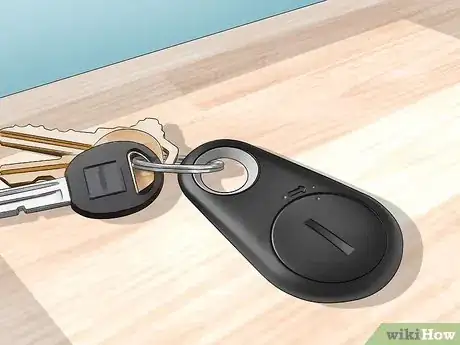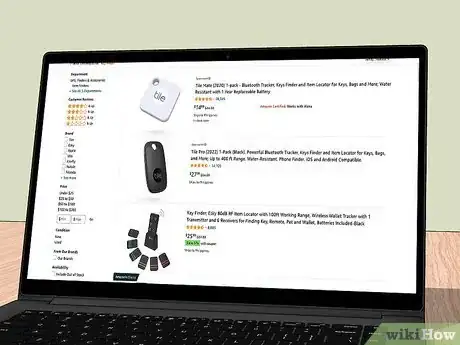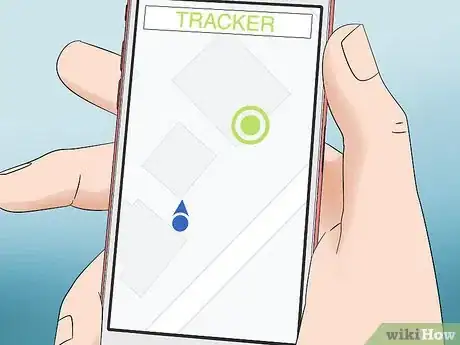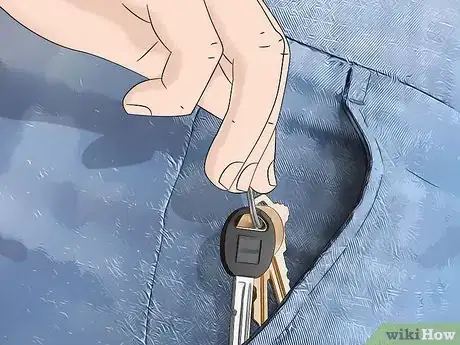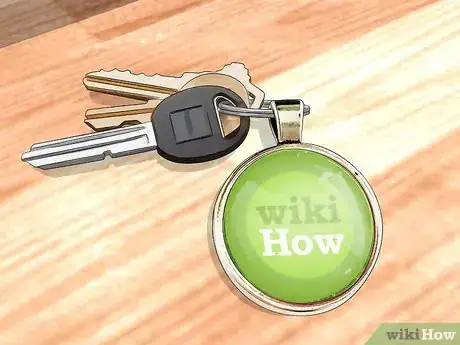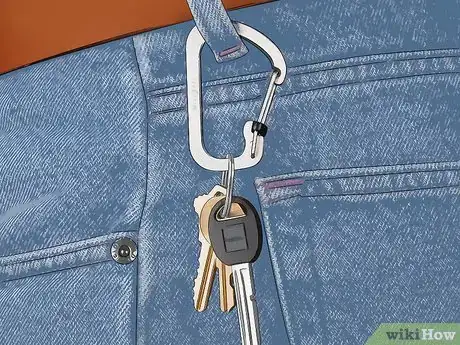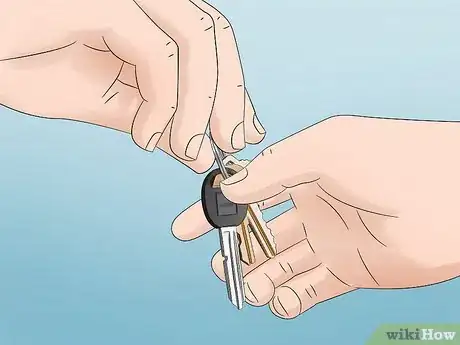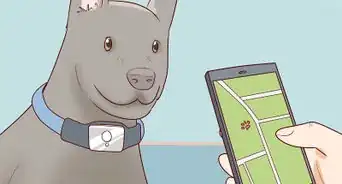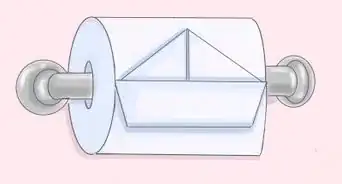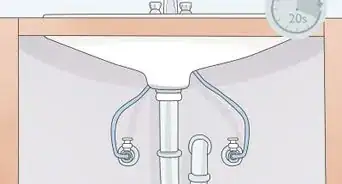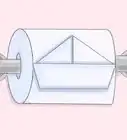This article was co-authored by Marty Stevens-Heebner, SMM-C, CPO®. Marty Stevens-Heebner was the first Certified Senior Move Manager (SMM-C) in the United States and is Founder and CEO of Clear Home Solutions, a move management and professional organizing company based in southern California. Marty is also a Certified Professional Organizer and a Certified Aging in Place Specialist (CAPS) through the National Association of Home Builders. She is the President-Elect and is on the board of directors of the National Association for Senior Move Managers, a member of the National Association of Professional Organizers, and has been acknowledged as a Hoarding Specialist and ADHD Specialist through the Institute for Challenging Disorganization.
wikiHow marks an article as reader-approved once it receives enough positive feedback. In this case, 92% of readers who voted found the article helpful, earning it our reader-approved status.
This article has been viewed 106,446 times.
There are arguably few things worse than the sinking feeling you realize you have lost your keys. Maybe you tend to be in a rush to leave your house but are unable to remember where you left your keys. You can keep track of your keys by using technological tools like wireless tracking devices. Good old fashioned routine and consistency can also help you remember where you put your keys and make it easy to head out for the day.
Steps
Using Tracking Devices
-
1Consider a wireless key finder.[1] Wireless key finders are compact tracking devices that can be attached directly to your keychain. These key finders are often no bigger than a standard keychain and send out a tracking signal that can be seen via Bluetooth on your smartphone. They are wireless and easy to use, making them a top choice if you are looking for a technological option for keeping track of your keys.[2]
- Many wireless key finders are also affordable and come with a rechargeable battery or batteries that can be replaced. The technology for key finders is also continuing to evolve and often new versions of a key finder will come out with even better functionality.
-
2Compare prices and functionality before you buy. There are many wireless key finders currently on the market, at varying price points and offering different levels of functionality. You should compare at least one to two key finders before you buy to find the right one for you. Some of the more popular wireless key finders include:
- Tile: This wireless key finder attaches to your keychain and can find your keys up to 80 feet away. It has a sleek, white design and a two way finding feature, where you can locate your keys with your phone and locate your phone with your keys through the key finder. It is also one of the more affordable wireless key finders at around $25USD and is compatible with Android and IOS smartphones. The downside of this wireless key finder is the batteries are non-replaceable, though they should last at least a year.[3]
- Duet by Protag: This wireless key finder can track your keys up to 80 feet away and lets out a buzz when it locates your keys. It is compatible with Android and IOS smartphones, and the battery is replaceable. It also has a two way finding feature and a geofencing feature, where you can see the location of your keys on a map and get alerts when you walk out of range of your keys. Finally, this device is not very expensive, at around $30 USD.[4]
- Pally Smart Find: Though this wireless key finder is on the larger end, about the size of a keychain fob, it can track your keys up to 90 feet. It also lets out a very loud alarm when you wander out of the range of your keys and it works on both Android and IOS smartphones. The device runs on two AAA batteries and boasts a two year battery life. It is also affordable, at $30 USD.[5]
Advertisement -
3Track your keys through your phone. Most wireless key finders can be used on a variety of smartphones, from Androids to iPhones. The smartphone must have Bluetooth capabilities and you will need to download an app that connects to the key finder to start tracking your keys.[6]
- You will then need to attach the key finder to your keychain and set up the finder through an app on your phone. You can then easily locate your keys by checking the location of the key finder on your phone.
- Many wireless key finders now have a two way finding feature, where you can locate your phone through the finder as well as your keys. You can locate your phone by pressing a button on the key finder. This option may come in handy if you tend to misplace your phone.
- If somehow you lose track of both your keys and your phone, you can log into your account (made through the wireless key finder program) on a computer and locate both items that way.
Using Routine and Consistency
-
1Keep your keys in a bowl by the door or on a hook. As creatures of habit, we can train ourselves to remember where we put important items by making a home for them in our living space.[7] This may mean designating a bowl by your front door as the keys bowl, the spot where your keys go when you get home. You may also have a brightly decorated keys hook right by your door so you can easily hang your keys when you go in and out of your home.
- Locating the home for your keys by the front door or an entrance you use often will ensure that you remember to put them where they belong as soon as you get inside (although this is, unfortunately, one of the first places a thief will look, too). Over time, this action will feel nature and habitual. It will also make it easier to find your keys in a moment of panic, as you simply need to look for them in their home.
-
2Place your keys in the same pocket every day. If you tend to lose your keys while you are on the go, get into the habit of putting your keys in the same pocket of your coat or the same pocket of your pants every day (just keep in mind that a coat can be a prime target for a thief). You can even integrate your keys into your daily dressing routine by putting on your clothing and then sliding your keys into your pocket as a final flourish. Sticking to the same pocket every day will ensure your keys are always in the same spot every day and remain there, even when you are on the go.
-
3Decorate your keychain so it is easy to find in your bag. Another option is to make your keychain bold and bright so it is easy to find the depths of your bag. A large, bright keychain is usually hard to misplace, especially if it has a unique decoration that is easy to identify.
- You may decide to make a woven keychain out of strips of plastic in bright colors, forming a long loop that attaches to your keychain to make it easier to dig out of your bag. You could also make a keychain by laminating photographs of family and friends and attaching a keyring to the small, square photographs. Personalizing your keychain could help it to stand out and mark it as clearly yours.
- Another option is to attach a small pouch to your keychain so you can carry some cash and a few important bank cards with your keys. You may be less likely to lose track of your keys if you know they are attached to important items.
- You can also buy decorative keychains that contain charms or decorative items to make it easier to find your keychain in your bag. Look for keychains that are easy to hold and have some weight to them.
-
4Use a belt hook to carry your keys around with you. Another popular option is to use a belt hook or a carabiner clip, which are often used in rock climbing to secure ropes. You can loop your keychain through the belt hook and then attach it to your back belt loop so the keys are secure when you are on the go. Carabiner clips come in a variety of shapes and colors, and are often very durable.[8]
- Carabiner clips make good belt hooks because they allow your keys to sit flat in your back pocket, making it easier to sit down while wearing your keys. If you have a lot of keys on your keychain, you may need to shift them out of the way while they are attached to your belt loop to sit down comfortably.
-
5Entrust a neighbor or a friend with an extra set of keys. If you tend to lose track of your keys on a consistent basis, you may want to leave an extra set of keys with a friend or neighbor as a precaution. Only leave the extra set with someone you trust and someone you can get in touch with easily if you do lose your set of keys.
- Some people put a spare set of keys in a hidden area outside of their home, such as under a potted plant or above the door landing. Try to store the spare set in a spot that is hard to access to ensure they are difficult to find, as you do not want a stranger to be able to open your door.
Expert Q&A
-
QuestionDo keys have trackers?
 Marty Stevens-Heebner, SMM-C, CPO®Marty Stevens-Heebner was the first Certified Senior Move Manager (SMM-C) in the United States and is Founder and CEO of Clear Home Solutions, a move management and professional organizing company based in southern California. Marty is also a Certified Professional Organizer and a Certified Aging in Place Specialist (CAPS) through the National Association of Home Builders. She is the President-Elect and is on the board of directors of the National Association for Senior Move Managers, a member of the National Association of Professional Organizers, and has been acknowledged as a Hoarding Specialist and ADHD Specialist through the Institute for Challenging Disorganization.
Marty Stevens-Heebner, SMM-C, CPO®Marty Stevens-Heebner was the first Certified Senior Move Manager (SMM-C) in the United States and is Founder and CEO of Clear Home Solutions, a move management and professional organizing company based in southern California. Marty is also a Certified Professional Organizer and a Certified Aging in Place Specialist (CAPS) through the National Association of Home Builders. She is the President-Elect and is on the board of directors of the National Association for Senior Move Managers, a member of the National Association of Professional Organizers, and has been acknowledged as a Hoarding Specialist and ADHD Specialist through the Institute for Challenging Disorganization.
Certified Professional Organizer Yes, there are companies that offer small things that you can attach to your keys or to your phone or what have you. Pay a small monthly subscription, and you can track them with an app. So if you leave them somewhere and don't know where they are, you can look up in the app, and it will tell you within several feet where they are.
Yes, there are companies that offer small things that you can attach to your keys or to your phone or what have you. Pay a small monthly subscription, and you can track them with an app. So if you leave them somewhere and don't know where they are, you can look up in the app, and it will tell you within several feet where they are. -
QuestionHow do you never lose your keys again?
 Marty Stevens-Heebner, SMM-C, CPO®Marty Stevens-Heebner was the first Certified Senior Move Manager (SMM-C) in the United States and is Founder and CEO of Clear Home Solutions, a move management and professional organizing company based in southern California. Marty is also a Certified Professional Organizer and a Certified Aging in Place Specialist (CAPS) through the National Association of Home Builders. She is the President-Elect and is on the board of directors of the National Association for Senior Move Managers, a member of the National Association of Professional Organizers, and has been acknowledged as a Hoarding Specialist and ADHD Specialist through the Institute for Challenging Disorganization.
Marty Stevens-Heebner, SMM-C, CPO®Marty Stevens-Heebner was the first Certified Senior Move Manager (SMM-C) in the United States and is Founder and CEO of Clear Home Solutions, a move management and professional organizing company based in southern California. Marty is also a Certified Professional Organizer and a Certified Aging in Place Specialist (CAPS) through the National Association of Home Builders. She is the President-Elect and is on the board of directors of the National Association for Senior Move Managers, a member of the National Association of Professional Organizers, and has been acknowledged as a Hoarding Specialist and ADHD Specialist through the Institute for Challenging Disorganization.
Certified Professional Organizer You need to set up a place for the keys to go. Notice where you tend to go grab your purse or briefcase, or what you pass by when you're heading out of the house, and station a special place for your keys there. It can be a small bowl or a small plate, or you can put a little hook on the wall, but make it a special place for the keys to go — not just some place you toss them, but a special place. Because then you will know where they are, and be mindful of that.
You need to set up a place for the keys to go. Notice where you tend to go grab your purse or briefcase, or what you pass by when you're heading out of the house, and station a special place for your keys there. It can be a small bowl or a small plate, or you can put a little hook on the wall, but make it a special place for the keys to go — not just some place you toss them, but a special place. Because then you will know where they are, and be mindful of that. -
QuestionHow can I find lost keys in my house if I have no key finder?
 Community AnswerCheck places where you last had them like the car, bedroom, or couch. Check the pockets of coats and clothes you recently wore. You may have dropped them so look under furniture, in your driveway, and on the garage floor.
Community AnswerCheck places where you last had them like the car, bedroom, or couch. Check the pockets of coats and clothes you recently wore. You may have dropped them so look under furniture, in your driveway, and on the garage floor.
References
- ↑ Marty Stevens-Heebner, SMM-C, CPO®. Certified Professional Organizer & Senior Move Manager. Expert Interview. 14 January 2020.
- ↑ http://thenextweb.com/gadgets/2013/12/01/gadgets-track-valuables/
- ↑ http://www.tomsguide.com/us/best-key-finders,review-2657.html
- ↑ http://www.tomsguide.com/us/best-key-finders,review-2657-4.html
- ↑ http://www.tomsguide.com/us/best-key-finders,review-2657-5.html
- ↑ http://thenextweb.com/gadgets/2013/12/01/gadgets-track-valuables/
- ↑ Marty Stevens-Heebner, SMM-C, CPO®. Certified Professional Organizer & Senior Move Manager. Expert Interview. 14 January 2020.
- ↑ http://www.highsnobiety.com/2013/04/17/buyers-guide-10-of-the-best-keychains-available-now/
